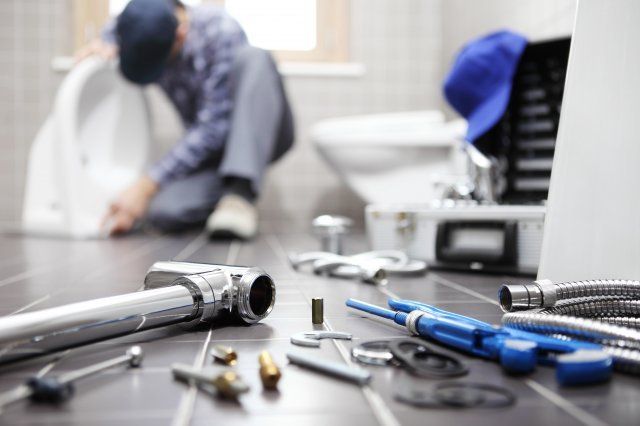4 Common Misconceptions About Your Bathroom Plumbing

Whether you're a homeowner or just renting, plumbing problems can give you a world of trouble. Keeping backups and clogs from occurring is in your best interest whenever possible, so you'll need to use best practices to take care of your drains. But with so much conflicting information floating around, it can be hard to tell what's true and what's false.
Here are four common myths you may hear about your bathroom plumbing.
1. Toilet Tank Bricks Are a Good Idea
If you have an old toilet with a large tank, you waste several gallons of water with each flush. Blocking off some of the extra space in the tank is a great idea but only if:
-
You leave enough space for water that your toilet still flushes effectively
-
You place the object to take up space between the low water mark and the high water mark
-
Your addition doesn't damage or obstruct any parts of the toilet
-
You use an object that won't deteriorate significantly over time
Bricks don't meet all of these qualifications. For example, a brick may seem solid, but it actually has significant porosity and can begin to degrade over time, disintegrating and losing little pieces of brick that can then damage the working parts of the toilet.
In addition, setting a brick flat in the tank may mean that it sits below the tank's low water mark. This displaces water, which can save one brick's worth of water once, but it doesn't save water every time you flush. To do that, it must be situated inside the refill area, which is the area between the low water mark and the high water mark.
Instead of using a brick, you can use a two-liter bottle or a product specifically designed for this purpose.
1. Toilet Tank Bricks Are a Good Idea
If you have an old toilet with a large tank, you waste several gallons of water with each flush. Blocking off some of the extra space in the tank is a great idea but only if:
-
You leave enough space for water that your toilet still flushes effectively
-
You place the object to take up space between the low water mark and the high water mark
-
Your addition doesn't damage or obstruct any parts of the toilet
-
You use an object that won't deteriorate significantly over time
Bricks don't meet all of these qualifications. For example, a brick may seem solid, but it actually has significant porosity and can begin to degrade over time, disintegrating and losing little pieces of brick that can then damage the working parts of the toilet.
In addition, setting a brick flat in the tank may mean that it sits below the tank's low water mark. This displaces water, which can save one brick's worth of water once, but it doesn't save water every time you flush. To do that, it must be situated inside the refill area, which is the area between the low water mark and the high water mark.
Instead of using a brick, you can use a two-liter bottle or a product specifically designed for this purpose.
2. Plungers Work for Drain Clogs
Your plunger is a great tool for clearing blockages in your toilet bowl, but it may not be up to clearing significant drain blockages elsewhere in your house. In addition, you could create a health hazard when you use something that's been in your toilet bowl in your sink.
Instead of grabbing your plunger when a drain slows or stops, you should try a chemical-free drain cleaner (such as an enzyme-based cleaner) and then call in the pros if you still have a problem.
3. Needing a Plumber Means You Did Something Wrong
A lot of drain clogs are caused or helped along when someone pours cooking grease down your drain. But even if you've done everything right, you could still have a problem.
For example, if you recently moved in, a partial blockage may already exist in the drain. Or maybe you're having trouble because tree roots are in your sewer line. If you have hard water, the problem could simply be limescale buildup in your pipes.
In any case, you don't need to feel embarrassed about calling in a professional.
4. Slow Drains Aren't a Problem
If you've noticed that your bathtub or sink drain has started to slow down, don't just wait and hope the problem goes away on its own. The drain won't slow down on its own, so you probably have a partial blockage somewhere along the line or some other problem such as a blocked plumbing vent.
These four misconceptions can cause confusion and could even cause or worsen your plumbing problems. Instead of falling victim to these myths, choose a professional plumber to help you out of any sticky situations.
Call Express Plumbing & Drain today to find out more about how we can help you keep your drains healthy and happy. Ask about our specials, and don't hesitate to call anytime you have an emergency.





